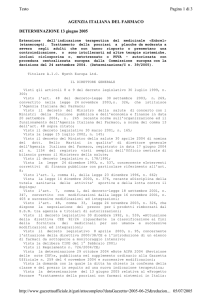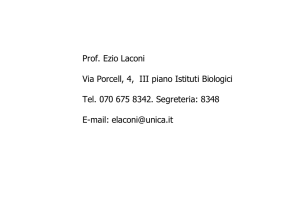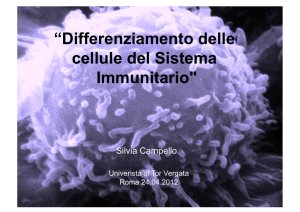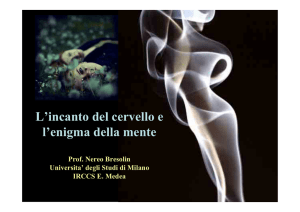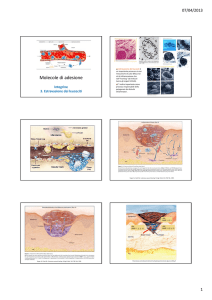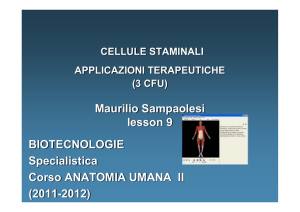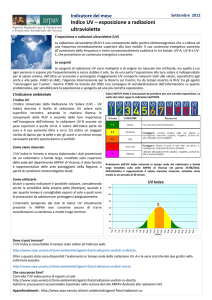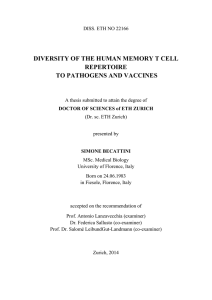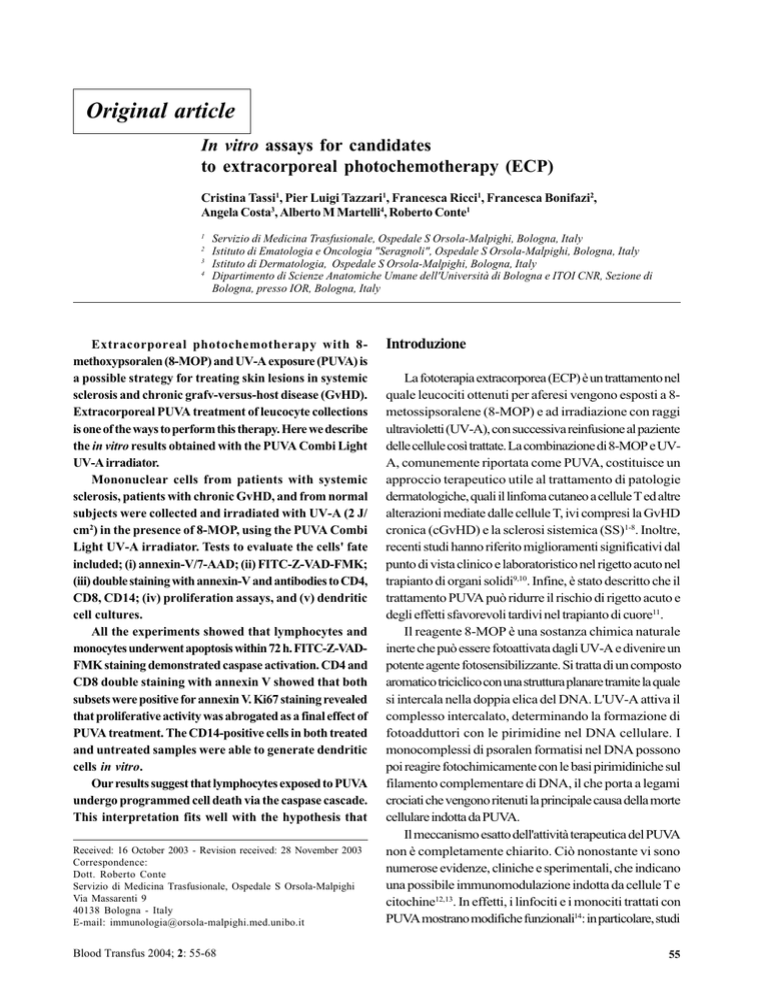
Original article
In vitro assays for candidates
to extracorporeal photochemotherapy (ECP)
Cristina Tassi1, Pier Luigi Tazzari1, Francesca Ricci1, Francesca Bonifazi2,
Angela Costa3, Alberto M Martelli4, Roberto Conte1
1
2
3
4
Servizio di Medicina Trasfusionale, Ospedale S Orsola-Malpighi, Bologna, Italy
Istituto di Ematologia e Oncologia "Seragnoli", Ospedale S Orsola-Malpighi, Bologna, Italy
Istituto di Dermatologia, Ospedale S Orsola-Malpighi, Bologna, Italy
Dipartimento di Scienze Anatomiche Umane dell'Università di Bologna e ITOI CNR, Sezione di
Bologna, presso IOR, Bologna, Italy
Extracorporeal photochemotherapy with 8methoxypsoralen (8-MOP) and UV-A exposure (PUVA) is
a possible strategy for treating skin lesions in systemic
sclerosis and chronic grafv-versus-host disease (GvHD).
Extracorporeal PUVA treatment of leucocyte collections
is one of the ways to perform this therapy. Here we describe
the in vitro results obtained with the PUVA Combi Light
UV-A irradiator.
Mononuclear cells from patients with systemic
sclerosis, patients with chronic GvHD, and from normal
subjects were collected and irradiated with UV-A (2 J/
cm2) in the presence of 8-MOP, using the PUVA Combi
Light UV-A irradiator. Tests to evaluate the cells' fate
included; (i) annexin-V/7-AAD; (ii) FITC-Z-VAD-FMK;
(iii) double staining with annexin-V and antibodies to CD4,
CD8, CD14; (iv) proliferation assays, and (v) dendritic
cell cultures.
All the experiments showed that lymphocytes and
monocytes underwent apoptosis within 72 h. FITC-Z-VADFMK staining demonstrated caspase activation. CD4 and
CD8 double staining with annexin V showed that both
subsets were positive for annexin V. Ki67 staining revealed
that proliferative activity was abrogated as a final effect of
PUVA treatment. The CD14-positive cells in both treated
and untreated samples were able to generate dendritic
cells in vitro.
Our results suggest that lymphocytes exposed to PUVA
undergo programmed cell death via the caspase cascade.
This interpretation fits well with the hypothesis that
Received: 16 October 2003 - Revision received: 28 November 2003
Correspondence:
Dott. Roberto Conte
Servizio di Medicina Trasfusionale, Ospedale S Orsola-Malpighi
Via Massarenti 9
40138 Bologna - Italy
E-mail: [email protected]
Blood Transfus 2004; 2: 55-68
Introduzione
La fototerapia extracorporea (ECP) è un trattamento nel
quale leucociti ottenuti per aferesi vengono esposti a 8metossipsoralene (8-MOP) e ad irradiazione con raggi
ultravioletti (UV-A), con successiva reinfusione al paziente
delle cellule così trattate. La combinazione di 8-MOP e UVA, comunemente riportata come PUVA, costituisce un
approccio terapeutico utile al trattamento di patologie
dermatologiche, quali il linfoma cutaneo a cellule T ed altre
alterazioni mediate dalle cellule T, ivi compresi la GvHD
cronica (cGvHD) e la sclerosi sistemica (SS)1-8. Inoltre,
recenti studi hanno riferito miglioramenti significativi dal
punto di vista clinico e laboratoristico nel rigetto acuto nel
trapianto di organi solidi9,10. Infine, è stato descritto che il
trattamento PUVA può ridurre il rischio di rigetto acuto e
degli effetti sfavorevoli tardivi nel trapianto di cuore11.
Il reagente 8-MOP è una sostanza chimica naturale
inerte che può essere fotoattivata dagli UV-A e divenire un
potente agente fotosensibilizzante. Si tratta di un composto
aromatico triciclico con una struttura planare tramite la quale
si intercala nella doppia elica del DNA. L'UV-A attiva il
complesso intercalato, determinando la formazione di
fotoadduttori con le pirimidine nel DNA cellulare. I
monocomplessi di psoralen formatisi nel DNA possono
poi reagire fotochimicamente con le basi pirimidiniche sul
filamento complementare di DNA, il che porta a legami
crociati che vengono ritenuti la principale causa della morte
cellulare indotta da PUVA.
Il meccanismo esatto dell'attività terapeutica del PUVA
non è completamente chiarito. Ciò nonostante vi sono
numerose evidenze, cliniche e sperimentali, che indicano
una possibile immunomodulazione indotta da cellule T e
citochine12,13. In effetti, i linfociti e i monociti trattati con
PUVA mostrano modifiche funzionali14: in particolare, studi
55
C Tassi et al.
autologous "modified" lymphoid antigens might be exposed
to the immune system, inducing a suppressor response
on autoreactive cells. Moreover, since PUVA-treated
monocytes are able to generate dendritic cells, it is possible
that these cells could present modified antigens to the
immune system of the patients, inducing a "tolerogenic"
response. The complete inhibition of cell proliferative
activity and strong induction of apoptotic phenomena
detected in PUVA-treated cells demonstrated that the PUVA
Combi Light equipment leads to main cell modifications,
in full agreement with results obtained from ECP using
other UV-A irradiation equipment. In addition, UV-A
irradiation by the PUVA Combi Light equipment is easy to
perform, reliable and fast, and is suitable for ECP purposes
in patients undergoing three-phase procedures.
Key words: 8 methoxypsoralen (8-MOP), apoptosis, chronic
GvHD, extracorporeal phototherapy (ECP), systemic
sclerosis, UV-A exposure
Parole chiave: 8-metossipsoralen (8-MOP), apoptosi,
cGvHD, ECP (fototerapia extracorporea), sclerosi sistemica,
esposizione a UV-A
in vitro hanno dimostrato apoptosi progressiva, alterazioni
fenotipiche e danni al DNA nelle cellule T così trattate15,16
insieme a una progressione verso una maturazione
dendritica dei monociti17. Tutte queste modifiche inducono
l'attivazione del sistema delle APCs (Antigen Presenting
Cells) e le cellule T così trattate sono catturate ed esposte,
via sistema MHC Classe I (MHC Class I system), ai linfociti
T citotossici circolanti, CD8-positivi18. Inoltre, è stato
evidenziato un aumento significativo di citochine
immunosoppressive sia nel citoplasma che nell'ambiente
extracellulare19. Quest'ultima modifica sembra portare a un
nuovo equilibrio fra le sottopopolazioni T helper (Th) e
ottenere favorevoli effetti nelle sindromi correlate sia a Th2
che a Th120.
Lo scopo del presente studio è quello di identificare in
vitro le cellule modificate dal trattamento PUVA, utilizzando
il nuovo irradiatore PUVA Combi Light su campioni
provenienti da pazienti selezionati.
Materiale e metodi
Pazienti
Introduction
Extracorporeal phototherapy (ECP) is a treatment in
which leucocytes obtained by apheresis are exposed to 8methoxypsoralen (8-MOP) and ultraviolet (UV)-A radiation
and then re-infused back into the patient. The combination
of 8-MOP and UV-A irradiation, commonly referred to as
PUVA, is a useful therapeutic approach in the treatment of
skin diseases such as cutaneous T-cell lymphomas and
other T-cell-mediated immune disorders, including chronic
graft-versus host disease (GvHD) and systemic sclerosis18
. Moreover, recent studies have reported significant clinical
and laboratory improvements in acute rejection of
transplanted solid organs9,10. Finally, pre-transplant PUVA
treatment has been described to reduce the risk of acute
rejection and late adverse effects in cardiac
transplantation11.
8-MOP is a naturally occurring inert chemical that can
be photoactivated by UV-A to become a powerful
photosensitising agent. It is a tricyclic aromatic compound
with a planar structure that helps it to intercalate between
nucleic acid base pairs. UV-A activates the intercalated
complex, resulting in the formation of photoadducts with
pyrimidines in cellular DNA. The psoralen monoadducts
formed in DNA can further react photochemically with a
pyrimidine base on the complementary strand of DNA, thus
56
Sono stati selezionati tre pazienti affetti da cGvHD dopo
trapianto allogenico di cellule staminali. Le loro
caratteristiche cliniche sono mostrate in tabella I. Sono stati,
inoltre, associati allo studio cinque pazienti affetti da SS,
senza coinvolgimento viscerale ma con alterazioni cutanee
da moderate a gravi. Infine, sono stati inclusi 10 donatori
sani, come controlli. Lo studio era stato approvato dal
Comitato Etico del Policlinico S.Orsola-Malpighi.
Preparazione dei campioni
Sono stati raccolti, in provette eparinate, 50 mL di
sangue periferico, dopo consenso informato. La frazione
di cellule mononucleate, ottenuta per centrifugazione su
gradiente Fycoll-Hypaque, è stata lavata e diluita in
fisiologica alla concentrazione cellulare finale di 10x106/mL.
Due mL di questa sospensione sono stati seminati in piastre
di Petri (Costar, Norwick, UK) e incubati con 8-MOP (Gerotz
Pharmazeutica, Vienna, A).
Irradiazione UV-A
L'irradiazione UV-A è stata effettuata con l'irradiatore
PUVA Combi Light (Dermat BVBA, Heverlee, B), adattato
al trattamento in vitro e ex-vivo di campioni biologici.
L'apparecchio è dotato di due dosimetri UV-A e ha un
Blood Transfus 2004; 2: 55-68
In vitro assays for ECP
leading to crosslinks that are believed to be the primary
cause of PUVA-induced cell killing.
The exact mechanism of the PUVA therapy action has
not been completely elucidated; nevertheless there is much
clinical and experimental evidence suggesting a role for
immunomodulation induced by T cells and cytokines12,13.
In fact, PUVA-treated lymphocytes and monocytes show
functional modifications14; in particular, in vitro studies
demonstrated progressive apoptosis, phenotype alterations
and DNA damage in treated T cells15,16 as well as
progression towards dendritic maturation in monocytes17.
All these changes might induce activation of antigenpresenting cells (APC) so that PUVA-treated T-cells are
captured and exposed, by the MHC Class I system, to
circulating CD8-positive cytotoxic T lymphocytes (CTL)18.
Moreover, significantly increased levels of
immunosuppressive cytokines have been detected both in
cytoplasm and in the extracellular environment19.
The latter modifications seem to lead to a new balance
between the Th subsets, and favourable effects could,
therefore, be obtained in both Th2- and Th1-related
syndromes20.
The aim of the present study was to identify in vitro
which cells are changed by PUVA treatment administered
with a new UV-A irradiator, namely the PUVA Combi Light,
to samples from selected patients who were to undergo
ECP.
Materials and Methods
Patients
Three patients affected by chronic GvHD after
allogeneic stem cell transplantation were selected. In
addition, five patients affected by systemic sclerosis
(without any visceral involvement but with moderate to
severe skin pathology) were enrolled. The clinical features
of these 8 patients are shown in Table I. Finally, ten healthy
donors were included as normal controls. The study was
approved by the Ethical Committee of S.Orsola-Malpighi
Polyclinic.
Samples
Fifty millilitres of peripheral blood were collected into
heparin tubes after informed consent had been given. The
mononuclear cell (MNC) fraction was obtained by gradient
centrifugation onto Fycoll-Hypaque, washed and diluted
in saline to a final concentration of 10x106 /mL cells. Two
Blood Transfus 2004; 2: 55-68
sistema di aerazione che assicurano sia l'esatta emissione
della dose richiesta di UV-A, sia il mentenimento di una
costante temperatura (al di sotto di 25 °C) nella camera di
irradiazione.
È stata preliminarmente preparata una curva di
valutazione dose-risposta per evidenziare la dose capace
di inibire oltre il 90% dell'attività proliferativa dei campioni
irradiati, quando paragonati ai controlli non trattati. I
campioni sono stati irradiati con 2 J/cm2, per un tempo di
irradiazione medio di 4'±33''. Dopo il trattamento PUVA, le
cellule contenute in una piastra Petri da coltura cellulare
(Corning Inc, Corning, BY, USA) venivano recuperate e
lavate due volte in soluzione fisiologica tamponata ai fosfati
pH 7,4.
Colture cellulari liquide
Le cellule non trattate e quelle trattate con PUVA sono
state utilizzate alla concentrazione di 5x106/mL in RPMI 1640
contenente 10% di siero fetale bovino (FCS) e
fitoemoagglutinina (PHA) alla concentrazione di 5 µg/mL:
tutti i reagenti sono stati forniti dalla ditta Sigma (Milano, I)
e incubate per tre giorni a 37 °C in atmosfera al 5% di CO2.
Studi sull'apoptosi
Il ritmo di apoptosi indotta è stato studiato sulle cellule
non trattate e trattate con PUVA all'inizio delle colture
liquide, dopo 6 e 12 ore di incubazione e, poi, ogni 24 ore
sino alla fine del giorno +3. L'esposizione della
fosfatidilserina alla superficie cellulare è stata evidenziata
con annessina V, coniugata con isotiocianato di
fluoresceina (FITC), e la morte cellulare mediante
colorazione con 7-aminoattinomicina D (7-AAD): il kit
annessinaV/7-AAD è stato fornito dalla ditta Beckman
Coulter (Miami, FL, USA). In sintesi, ai campioni risospesi
in un tampone appropriato contenente Ca e fornito con il
kit, sono stati aggiunti FITC-annessina V e 7-AAD
seguendo le istruzioni del produttore. La citometria a flusso
è stata eseguita con il citometro Epics XL (Beckman
Coulter), acquisendo almeno 10.000 eventi.
Per analizzare ulteriormente l'apoptosi dipendente dalle
caspasi, abbiamo utilizzato un reagente FITC permeabile
alle cellule, il FITC-Z-VAD-FMK (Promega, Madison, WI,
USA), che è l'analogo fluorescente dell'inibitore delle
caspasi Z-VAD-FMK, in grado di legarsi, selettivamente e
irreversibilmente, alla caspasi attivate. Campioni di 2x105
cellule sono stati incubati con FITC-Z-VAD-FMK (alla
concentrazione finale pari a 10 µM, secondo le indicazioni
del produttore) per 30' a 37 °C. L'intensità di fluorescenza è
57
C Tassi et al.
Table I - Clinical characteristics of the patients with chronic GvHD and systemic sclerosis
Patients
MF
TM
CR
BR
BR
LH
SB
CR
Disease
Immunosuppressive
therapy
Age
Source
Organs involved
Interval between
diagnosis and PUVA (months)
MM
CML
ALL
SS
SS
SS
SS
SS
CyA, Ster
CyA, Ster
CyA, Ster, Mycoph
No treatment
No treatment
No treatment
No treatment
No treatment
46
24
17
52
55
36
68
45
PBSC
PBSC
PBSC
E/S
E/S
G/S
S (fingers, face)
S (fingers, face)
S (arms, neck, face)
S (hand, arm)
S (face, hand)
24
36
4
120
96
12
60
24
Legend: MM=multiple myeloma; CML=chronic myeloid leukaemia; ALL=acute lymphocytic leukaemia; SS=systemic sclerosis;
CyA=cyclosporine A; Ster=steroids; Mycoph=mycophenolate; PBSC=peripheral blood stem cells; E=eye; G=gut; S=skin
millilitres of the cell suspension were seeded in Petri dishes
(Costar, Norwich, UK) and incubated with 8-MOP 200 ng/
mL (Gerotz Pharmazeutica, Vienna, Austria).
UV-A irradiation
UV-A irradiation was performed using the PUVA Combi
Light irradiator (Dermat BVBA, Heverlee, Belgium), which
is suitable for in vitro and ex vivo treatment of biological
samples. The equipment was provided with two UV-A
dosimeters and an air ventilation system to ensure both
accurate emission of the required UV-A dose and a constant
irradiation chamber temperature below 25 °C.
A preliminary dose-response curve was constructed
to find the UV-A dose able to inhibit >90% of the
proliferative activity in irradiated samples. Samples were
then always irradiated with 2 J/cm2 for a mean irradiation
time of 4'±33". After PUVA treatment, cells contained in a
Petri cell culture dish (Corning Inc, Coring, NY, USA) were
recovered and washed twice with phosphate-buffered
saline (PBS).
Three-day liquid cultures
Untreated and PUVA-treated cells were used at a
concentration of 5x106/mL cells in RPMI 1640 medium
containing 10% foetal calf serum (FCS) and
phytohaemagglutinin (PHA) (5 m g/mL) (all reagents
obtained from Sigma, Milan, Italy) and incubated for three
days at 37 °C in a 5% CO2 atmosphere.
Apoptosis studies
The time-course of induced apoptosis was studied on
untreated and PUVA-treated samples at the start of the
liquid cultures, after 6 and 12 hours of incubation, then
every 24 hours until day +3 of culture. Phosphatidylserine
58
stata analizzata con il citometro a flusso Epics XL. Anche
in questo caso, sono stati acquisiti almeno 10.000 eventi.
Per valutare la percentuale di sottopopolazioni linfocitarie
CD4+ e CD8+ e di monociti apoptotici, abbiamo eseguita
una doppia colorazione, combinando 5 µL di anticorpi
monoclonali coniugati con ficoeritrina (PE-mAbs) e FITCannessina V. L'analisi è stata condotta in citometria
acquisendo, come in precedenza, almeno 10.000 eventi.
Analisi dell'attività proliferativa delle cellule
I campioni cellulari lavati venivano, dopo coltura di
tre giorni con PHA e FCS al 10%, fissati con etanolo al
70%. Le cellule venivano poi colorate con ioduro di
propidio e con FITC-Ki-67, che è un marcatore del nucleo
positivo dalla fase G1 attivata a S-G2-M. La positività per
Ki-67 è stata analizzata contestualmente al profilo del ciclo
cellulare ottenuto dalla colorazione con ioduro di propidio.
Per l'analisi è stato utilizzato un software dedicato per
evitare il conteggio di cellule raggruppate due a due
(doublets) nella regione G2-M; sono stati acquisiti almeno
10.000 eventi.
Studi su colture e fenotipi delle cellule
dendritiche (DC)
Un'alta percentuale di cellule CD14+ purificate è stata
ottenuta dai campioni di cellule non trattate e trattate con
PUVA, incubate con biglie immunomagnetiche coniugate
con anticorpo monoclonale CD14, e successivamente
separate con il sistema VarioMacs, secondo le istruzioni
del produttore (Miltenyi Biotec, Bergisch Gladbach, D).
1x106/mL cellule CD14+, provenienti da campioni non trattati
e trattati con PUVA, diluite in un millilitro del mezzo di coltura
CellGroDC (Genix Cell Techmology Transfer, Freiburg, D),
arricchito con 10 ng/mL di interleuchina 4 (IL-4, Valter
Occhiena, Torino, I) e 1.000 U/mL di GM-CSF (Valter
Blood Transfus 2004; 2: 55-68
In vitro assays for ECP
surface exposure was detected by means of fluorescein
isothiocyanate (FITC)-conjugated annexin V and dead cells
by staining with 7-amino-actinomycin (7-AAD) (annexin
V/7-AAD kit, Beckman Coulter, Miami, FL, USA). Briefly,
FITC-annexin V and 7-AAD were added according to the
manufacturer's instructions to the samples resuspended in
an appropriate calcium-containing buffer included in the
kit. Flow cytometry analysis was performed using an Epics
XL cytometer (Beckman-Coulter). At least 10,000 events
were acquired.
In order to analyse caspase-dependent apoptosis
further, we also employed a FITC-cell permeable reagent,
FITC-Z-VAD-FMK (Promega, Madison, WI, USA), which
is a fluorescent analogue of the Z-VAD-FMK caspase
inhibitor that selectively and irreversibly binds activated
caspases. Briefly, 2 x 105 cells were incubated with FITC-ZVAD-FMK (final concentration = 10 µM, as suggested by
the manufacturer) for 30 min at 37 °C. Fluorescence intensity
was then analysed with the Epics XL flow cytometer. In
this case, too, at least 10,000 events were acquired. To
assess the percentages of apoptotic CD4+ and CD8+
lymphoid subsets and monocytes we performed double
staining combining 5 mL of phycoerythrin (PE)-conjugated
monoclonal antibodies and FITC-annexin V. Analysis was
performed by flow cytometry, and at least 10,000 events
were acquired.
Cell proliferative activity
Samples were washed after three days of liquid culture
with PHA and 10% FCS, and fixed with 70% ethanol. Cells
were then stained with propidium iodide and FITC-Ki-67,
which is a nuclear marker found from activated G1 to S-G2M phases; Ki-67 positivity was analysed contemporarily
with the cell-cycle profile obtained from propidium iodide
staining. A specific analysis programme was generated
with Epics XL-software to avoid doublet analysis in the
G2-M region; at least 10,000 events were acquired.
Dendritic cells (DC) cultures and phenotype
studies
A highly purified CD14+ cell fraction was obtained from
untreated and PUVA-treated samples after immunomagnetic
separation using VarioMacs equipment with CD14-labelled
immunomagnetic beads, according to the manufacturer's
instructions (Miltenyi Biotec, Bergisch Gladbach, D). A
suspension of 1x106 CD14+ cells/mL was made by diluting
untreated and PUVA-treated samples were diluted in 1 mL
of CellGroDC culture medium (Genix Cell Technologie
Blood Transfus 2004; 2: 55-68
Occhiena), sono state messe in coltura per 3 giorni a 37 °C
in atmosfera di CO2 al 5%. Al giorno +3 sono stati aggiunti
IL-4 e GM-CS, per ulteriori 2 giorni.
Quindi dal giorno +6, 1µg/mL di lipopolisaccaride
(Sigma) e 25 ng/mL di TNF-a(Valter Occhiena). Al giorno
+9, le cellule sono state raccolte, lavate due volte, contate
e sottoposte ad analisi del ciclo cellulare e a quella
fenotipica. Per gli studi pre-colturali e colturali, sono stati
impiegati anticorpi monoclonali diretti contro gli antigeni
CD1a, CD11c, CD80, CD83, CD40, recettore del mannosio,
CD86, CD14, DR, CD56, CD16, CD3, CD4 e CD8 (tutti forniti
dalla ditta Beckman Coulter, coniugati con FITC o PE,
secondo necessità).
Analisi statistica
Per il confronto tra 2 o più gruppi, sono stati impiegati
i test di Mann-Whitney o di Kruskall-Wallis, considerando
significativi valori di p<0,05. Queste analisi sono state
condotte usando il software StatView (SAS Institute Inc,
Cary, NC, USA).
Risultati
Analisi con FITC-annessina V e doppia
colorazione con 7-AAD
Per prima cosa, abbiamo indagato, in citofluorimetria a
flusso, se il trattamento con l'apparecchio PUVA Combi Light
fosse in grado di indurre apoptosi sui leucociti in esame. I
risultati ottenuti dall'analisi con FITC-annessina V sui
campioni non trattati o trattati con PUVA provenienti da
donatori sani e da pazienti con cGvHD e SS sono mostrati in
tabella II e in figura 1. In particolare, la popolazione cellulare
annessina V+/7-AAD+ è stata analizzata dopo 12 e dopo 72
ore di coltura. A +72 ore, le cellule non trattate dimostravano
un aumento medio di 4 volte dell'apoptosi spontanea senza
differenze significative nei tre gruppi studiati.
Paragonate ai campioni non trattati, le cellule trattate
con PUVA hanno mostrato, 12 ore dopo l'irradiazione, una
maggiore percentuale di cellule positive per annessina V
(controlli: 4,9% contro PUVA: 11%).
Per tutto il corso dell'esperimento, la percentuale di
cellule annessina V+ è progressivamente aumentata con
un incremento finale di15 volte con una positività media
dell'85%. I test di Mann-Whitney or Kruskall-Wallis hanno
dimostrato una percentuale di cellule annessina V+/7-AAD+
significativamente (p=0,001) più alta nei campioni trattati
con PUVA dopo 72 ore di irradiazione, senza differenze
59
C Tassi et al.
Transfer, Freiburg, D) supplemented with 10ng/mL
interleukin 4 (IL-4) (Valter Occhiena, Turin, Italy) and 1,000
U/mL granulocyte-monocyte colony-stimulating factor
(GM-CSF) (Valter Occhiena). The cell suspension was
cultured for three days at 37°C in a 5% CO2 atmosphere. On
day +3, IL-4 and GM-CSF were added at the above
concentrations and incubation continued for another two
days. For maturation assays, 1mg/mL lipopolysaccharide
(Sigma) and 25 ng/mL tumour necrosis factor-a(Valter
Occhiena) were added from day +6. On day +9 of culture,
cells were collected, washed twice, counted and submitted
to cell cycle and phenotype analysis. Monoclonal
antibodies directed against CD1a, CD1c, CD80, CD83, CD40,
mannose receptor, CD86, CD14, DR, CD56, CD16, CD3, CD4
and CD8 antigens (all purchased from Beckman Coulter as
FITC or PE conjugates, as required), were employed for the
pre-culture and cultured cell phenotype studies.
Statistical analysis
Mann-Whitney or Kruskall-Wallis tests for not
parametric data were employed to compare continuous
variables as appropriate; p values <0.05 were considered
statistically significant. Analyses were performed using
StatView computer software (SAS Institute Inc. Cary, NC,
USA).
Results
FITC-annexin V analysis and double staining
with 7-AAD
Using flow cytometry we first investigated whether
PUVA treatment with the PUVA Combi Light equipment
was able to induce apoptosis of leucocytes. The results of
the FITC-annexin V analyses in untreated and PUVA-treated
samples from normal healthy donors, patients with chronic
GvHD and patients with systemic sclerosis are shown in
Table II and Figure 1.
The dying cell populations (annexin V+/7-AAD+) were
analysed after 12 and 72 hours of culture. At 72 hours,
untreated cells showed a mean 4-fold increase in
spontaneous apoptosis. No significant differences were
found between samples from the three groups studied.
Compared to untreated samples, a higher percentage of
PUVA-treated cells were annexin V-positive (controls: 4.9%
vs PUVA-treated: 11%), twelve hours after irradiation. The
percentage of annexin V-positive cells was found to increase
significantly throughout the time-course of the experiment
60
fra soggetti sani e pazienti. Per meglio valutare l'apoptosi,
è stato utilizzato il FITC-Z-VAD-FMK. L'analisi in citometria
a flusso (i risultati sono mostrati in tabella III) conferma ed
estende i risultati ottenuti con la colorazione con annessina
V, in quanto, nei campioni PUVA trattati da 72 ore,
mediamente il 62,5% delle cellule è FITC-Z-VAD-FMK
positivo. I risultati ottenuti con FITC-Z-VAD-FMK
correlano correttamente con quelli ottenuti con la
colorazione con annessina V, confermando una stretta
connessione fra l'attivazione delle caspasi, l'induzione di
apoptosi e la positività di annessina V nelle cellule trattate
con PUVA.
Analisi dell'attività proliferativa nelle cellule
trattate con PUVA
Un altro indice importante per valutare l'impatto del
trattamento PUVA sulle cellule è l'analisi del ciclo cellulare,
mediante l'espressione dell'antigene Ki67. Tale positività è
stata valutata dopo 72 ore di coltura con PHA. È stata
preparata, in via preliminare, una curva dose-risposta per
identificare la dose ottimale di UV-A in grado di inibire la
proliferazione cellulare. È stato pertanto effettuato il
trattamento UV-A a dosi 0,5; 1; 1,5 e 2 J/cm2 su cellule
incubate con 8-MOP, 200 ng/mL. Come atteso, la percentuale
di cellule positive per l'antigene del nucleo Ki67 era inferiore
al 10% in tutti i campioni irradiati con 2 J/cm2, mentre dosi
minori di UV-A non erano in grado di inibire
significativamente la sintesi di DNA e la proliferazione
cellulare (Figura 2). La figura 3 mostra una decisa inibizione
dell'attività proliferativa in tutti i campioni trattati con 200
ng/mL di 8-MOP, più irraggiati con 2 J/cm2.
Analisi delle sottopopolazioni linfocitarie e dei
monociti apoptotici nel campioni trattati con
PUVA
Sono stati studiati gli effetti del PUVA trattamento sulle
sottopopolazioni linfocitarie T, CD4+ e CD8+ e sui monociti
CD14+. Allo scopo, i campioni sono stati opportunamente
marcati con FITC-annessina V e con PE-anticorpi
monoclonali diretti contro gli antigeni linfocitari o
monocitari. Nelle sottopopolazioni linfocitarie studiate a
12 e 72 ore dal PUVA trattamento, è stato osservato un
incremento medio della frazione apoptotica di 2 e 4 volte
rispettivamente (Figure 4 e 5). Infine, per quanto riguarda i
monociti e le cellule selezionate CD14+, l'analisi
citofluorimetrica ha permesso di evidenziare su campioni a
72 ore dal PUVA trattamento apoptosi indotta nell' 80%
delle cellule.
Blood Transfus 2004; 2: 55-68
In vitro assays for ECP
Table II - Annexin V variations in control samples and PUVA-treated samples
UNTREATED SAMPLES (CTR)
+12hours
Normal subjects
+72hours
4.9%±1.1*
26%±2.3**
p=0.01
PUVA-TREATED
+12hours
+72hours
11%±3*
70%±15**
p=0.001
Systemic sclerosis patients
8.5%±2§
19%±5**
p=0.10
20%±3§
70%±12**
p=0.006
cGvHD patients
3.5%±2^
16%±2**
p=0.01
11%±4^
79%±15**
p=0.001
*untreated vs PUVA-treated: p = 0.08
** untreated 72 hours vs PUVA-treated 72 hours: p = 0.002
§untreated vs PUVA-treated: p = 0.3;
^untreated vs PUVA-treated: p = 0.009
ANALYSIS OF ANNEXIN V-POSITIVE CELLS AFTER PUVA TREATMENT
PERCENTAGE OF ANNEXIN V-POSITIVE CELL
80
70
CTR
SYSTEMIC SCLEROSIS
60
cGvHD
50
40
30
20
10
0
ANN V t0
ANN V t0 PUVA
ANN V t+72H
ANN V t+72H PUVA
Figure 1 - Analysis of annexin V positive cells after PUVA treatment. Samples were cultured in RPMI 1640 medium with PHA and
10% FCS. CTR: samples from normal subjects; Systemic sclerosis: samples from patients with systemic sclerosis;
cGvHD: samples from patients with chronic GvHD
with a final 15-fold increment of annexin V % and a mean of
85% annexin V+/7AAD+ cells detected. Mann-Whitney or
Kruskall-Wallis tests demonstrated significantly (p=0.001)
higher percentages of annexin V+7/AAD+ cells among the
PUVA-treated cells after 72 hours of irradiation, without
any difference between samples from normal subjects,
patients with chronic GvHD and those with systemic
sclerosis.
To evaluate the apoptotic phenomena better, we also
used FITC-Z-VAD-FMK. Flow cytometric analysis of the
binding of this reagent (Table III) confirmed and extended
Blood Transfus 2004; 2: 55-68
Analisi della maturazione di DC nei campioni
trattati con PUVA
Le cellule CD14+ trattate con PUVA erano indotte a
maturare verso cellule dendritiche come dimostrato dagli
studi fenotipici riportati in tabella IV. Ai fini dello studio
funzionale su tali cellule, ne è stata indagata la capacità di
presentazione antigenica (APC) mediante colture miste
linfocitarie (MLR) autologhe ed allogeniche.
Non si è osservata alcuna attività proliferativa dei
linfociti nelle colture autologhe. Nelle colture miste
61
C Tassi et al.
Table III - FITC-Z-VAD-FMK positivity in control samples and PUVA-treated samples
UNTREATED SAMPLES (CTR)
+12hours
Normal subjects
Systemic sclerosis patients
cGvHD patients
10%±6*
+72hours
PUVA-TREATED
+12hours
+72hours
14%±3**
p=0.70
25%±9*
70%±15**
p=0.02
11.7%±7§
16%±12**
p=0.30
27%±1§
50%±3**
p=0.05
8%±2^
p=0.1
12%±8**
24%±12^
65%±29**
p=0.03
*CTRvsPUVA:p=0.018;
**CTR3days*vsPUVA3days: p=0.002
§CTRvsPUVA:p=0.03;
^CTRvsPUVA:p=0.009
the results obtained with annexin V staining, since a mean
of 62.5% FITC-Z-VAD-FMK positive cells was detected in
PUVA-treated samples at 72 hours. Thus, the results
obtained with FITC-Z-VAD-FMK correlated well with those
obtained by annexin V staining, further suggesting strong
correlations among caspase activation, apoptosis induction
and annexin V positivity in PUVA-treated cells.
allogeniche l'attività clonogenica dei T linfociti era stimolata
dalle DC sia trattate che non trattate con PUVA. Tuttavia,
in presenza di DC ottenute da cellule CD14+ PUVA trattate,
i linfociti T hanno presentato inferiori indici di proliferazione
(dati non mostrati). Questi dati sembrano in accordo con la
descritta inibizione della funzione APC da parte del PUVA
trattamento20.
Cell proliferative activity in PUVA-treated
cells
Discussione
Another important index to assess the impact of PUVA
treatment on cell populations is to analyse the proliferation
rate of the cells, evaluated by Ki67 expression. Ki67 nuclear
antigen expression was evaluated after 72 hours of PHAstimulated culture. A preliminary dose-response curve was
constructed to identify the optimal dose of UV-A irradiation
able to abrogate cell proliferation. UV-A treatment was then
performed with 0.5, 1, 1.5 and 2 J/cm2 on 200 ng/mL 8-MOPincubated cells. As expected, less than 10% of cells from
all samples irradiated with 2 J/cm2 were Ki67 nuclear antigenpositive, while lower doses of UV-A were unable to
completely inhibit DNA synthesis and cell proliferation
(Figure 2). Figure 3 shows severe inhibition of cell
proliferative activity in all samples treated with 200 ng/mL
8-MOP+2 J/cm2 UV-A irradiation.
Analysis of apoptotic lymphocyte subsets and
monocytes in PUVA-treated samples
We further investigated whether the CD4 and CD8
subsets of T lymphocytes and CD14+ monocytes might be
differently affected. Cells were double stained with FITCannexin V and PE-conjugated monoclonal antibodies
directed against CD4, CD8 or CD14-related antigens. Within
62
L'ECP può essere effettuata con due differenti modalità.
a- Fotoaferesi o sistema diretto: irraggiamento continuo
del buffy coat raccolto durante la procedura aferetica.
b- Sistema in tre fasi o indiretto:
1- leucoaferesi;
2- incubazione del prodotto aferetico con 8-MOP, poi
UV-A irraggiamento;
3- reinfusione al paziente.
Scopo del presente studio è stato valutare, mediante
test in vitro, l'efficienza dell'irraggiatore PUVA Combi Light,
in vista di un possibile impiego di tale apparecchio nell'ECP
in tre fasi. Come è noto, il trattamento PUVA induce
alterazioni morfologiche e fenomeni di attivazione
irreversibili, sia sui linfociti che sui monociti, tali alterazioni
possono essere individuate mediante studi citofluorimetrici
e/o funzionali22. Il nostro interesse è stato in particolare
rivolto allo studio dei fenomeni apoptotici ed all'inibizione
della proliferazione cellulare PUVA indotti e strettamente
correlati all'efficacia clinica del trattamento. Per quanto
riguarda l'apoptosi nell'ECP, due sono i possibili meccanismi
proposti: uno caspasi-indipendente, l'altro, al contrario,
caspasi dipendente23. Quest'ultimo consiste nell'attivazione
a cascata delle caspasi, con conseguente, progressiva
apoptosi cellulare24. Ai fini dello studio, si è sfruttato il
Blood Transfus 2004; 2: 55-68
In vitro assays for ECP
SENSITIVITY CURVE. Ki67 ANALYSIS. RESULTS ARENORMALISED TO CONTROL VALUES (=1)
1,4
1,2
t0
t24h
t48h
t72h
Ki67 VALUES
1
0,8
0,6
0,4
0,2
0
CTR
0,5 J
1,0 J
1,5 J
2,0 J
Figure 2 - Ki67 analysis on samples obtained from normal subjects. Samples were cultured in RPMI 1640 medium with PHA and
10% FCS. Time-course experiment with different doses of UV-A. Results are normalised to control (no UV-A) values (=1)
Ki67 ANALYSIS ON PERIPHERAL BLOOD CELLS
Figure 3 - Ki67 analysis on peripheral blood samples exposed to PUVA treatment. Samples were cultured in RPMI 1640 medium
with PHA and 10% FCS. CTR: samples from normal subjects; Systemic sclerosis: samples from patients with systemic
sclerosis; cGvHD: samples from patients with chronic GvHD
Blood Transfus 2004; 2: 55-68
63
C Tassi et al.
CD4/ANNEXIN V DOUBLE STAINING ON PERIPHERAL BLOOD LYMPHOCYTES
Figure 4 - Analysis of CD4/annexinV double stained cells on peripheral blood samples exposed to PUVA treatment. Samples were
cultured in RPMI 1640 medium with PHA and 10% FCS. CTR: samples from normal subjects; Systemic sclerosis:
samples from patients with systemic sclerosis; cGvHD: samples from patients with chronic GvHD
CD8/ ANNEXIN V DOUBLE STAINING ON PERIPHERAL BLOOD LYMPHOCYTES
Figure 5 - Analysis of CD8/annexinV double stained cells on peripheral blood samples exposed to PUVA treatment. Samples were
cultured in RPMI 1640 medium with PHA and 10% FCS. CTR: samples from normal subjects; Systemic sclerosis:
samples from patients with systemic sclerosis; cGvHD: samples from patients with chronic GvHD
64
Blood Transfus 2004; 2: 55-68
In vitro assays for ECP
Table IV - Phenotype studies on selected CD14+ cells and mature cultured dendritic cells (DC)
Antigens
detected
CD1a
CD11c
CD40
CD80
CD83
DR
Mannose Rec
CD14
CD3/CD8/CD4
NORMAL
PUVA T0
PUVA+9
neg
35±12
neg
neg
neg
65±34
neg
83±10
neg
cGvHD
PUVA T0
PUVA+9
31±3
80±10
18±12
96±12
50±39
97±1
28±20
0.5±0.1
neg
the CD4+ and CD8+ subsets, the apoptotic cells increased
2-4 fold from the beginning to the end of the liquid culture,
as shown in Figures 4 and 5. CD14+ selected cells were
found to be markedly affected by PUVA treatment, showing
an average of 80% annexin V+ cells at 72 hours after
treatment.
DC differentiation analysis in PUVA-treated
samples
PUVA-treated CD14+ enriched cells were able to
maturate towards DC as demonstrated by phenotype
analysis shown in Table IV, while proliferative activity was
found to be completely inhibited. The efficiency of antigenpresenting cells was investigated by means of co-cultures
with autologous or allogeneic T-lymphocytes. No
lymphocyte proliferation was observed in autologous cocultures. In allogeneic mixed lymphocyte reactions (MLR),
the clonogenic activity of T-lymphocytes was stimulated
by both PUVA-treated and untreated DC. However, in the
presence of PUVA-exposed CD14+ cell-derived DC, a lower
T-lymphocyte proliferation index was detected (data not
shown). These results seem to be in agreement with the
described inhibited antigen-presenting cell function of
PUVA-treated DC20.
Discussion
ECP can be carried out using two different techniques21:
direct, continuous UV-A irradiation of the lymphocytemonocyte apheretic collection (photoapheresis), and a
three-phase system, consisting of three different steps: (i)
collection of the lymphocyte-monocyte peripheral fraction;
(ii) ex vivo incubation of leucoapheresis products with 8MOP and UV-A irradiation; (iii) reinfusion of the PUVAtreated leucocytes into the patient.
Blood Transfus 2004; 2: 55-68
neg
39±5
neg
neg
25±10
28±20
neg
87±5
neg
27.5±5
97±9
53±28
85±15
81.5±20
66±31
56±23
0.3±0.1
neg
Systemic sclerosis
PUVA T0
PUVA+9
neg
33±6
neg
neg
neg
49±30
neg
84±8
neg
27±2
54±25
50±35
35±20
37±20
56±35
34±20
0.2±0.05
neg
legame tra annessina V e i gruppi di fosfatidilserina,
precocemente esposti dalla cellula avviata all'apoptosi.
Nella nostra casistica in vitro la percentuale di cellule PUVA
trattate, annessina V-FITC positive, è risultata
significativamente più elevata rispetto ai controlli, a partire
da 12 ore post-trattamento con drammatica progressione
entro 72 ore. A completamento dello studio, si è esplorata
la possibile attivazione delle caspasi mediante l'inibitore ZVAD-FMK, in grado di legarsi alle caspasi attivate. In
parallelo con la positività per annessina V, si è evidenziata
una proporzione rilevante di cellule Z-VAD-FMK positive,
a conferma della supposta apoptosi caspasi dipendente22.
Un altro importante punto di discussione riguarda il
bersaglio dell'ECP. I linfociti T, sono stati indicati come il
bersaglio preferenziale del trattamento PUVA, mentre i
linfociti B, mancando del sistema Fas/Fas-L, sono resistenti.
Recenti pubblicazioni descrivono come egualmente sensibili
le sottopopolazioni CD4+ e CD8+25.
Nel nostro studio, si sono evidenziati marcatori
apoptotici in entrambe queste sottopopolazioni, più
precocemente in quella CD4+.
Tali risultati sembrano confermare che il trattamento
PUVA è in grado di danneggiare irreversibilmente differenti
popolazioni cellulari, senza un target specifico. Sono stati
inoltre studiati le modificazioni funzionali e gli effetti
apoptotici indotti dal PUVA trattamento sulla popolazione
monocitaria, usualmente descritta apoptosi-resistente25,
anche se evidenze recenti paiono confutare tali ipotesi14.
Nel nostro studio, condotto sulle cellule CD14+ presenti
nei campioni interi o ottenute dopo selezione
immunomagnetica, è stata documentata un'elevata
percentuale di cellule CD14+/annessina V+ (dati non
presentati). D'altra parte, linduzione alla maturazione in
senso DC da parte del PUVA trattamento, è ormai dimostrata.
Tali aspetti sono stati confermati nel nostro studio di colture
DC effettuate con cellule CD14+ poste, dopo PUVA
trattamento, in opportuni terreni. Come atteso, tali cellule
65
C Tassi et al.
The aim of the present study was to investigate the
efficiency of the PUVA Combi Light UV-A irradiator (not
usually employed for ECP purposes) by in vitro tests on
peripheral blood samples obtained from patients with
chronic GvHD or systemic sclerosis and from normal
subjects.
ECP induces many alterations in lymphocyte and
monocyte activation that can be detected by flow cytometry
and functional studies22. Our investigation focused
particularly on the apoptosis and inhibition of proliferative
activity induced by PUVA treatment, since the effectiveness
of ECP has been explained, in part, by the induction of
apoptosis in the treated leucocytes.
Two pathways have been suggested to explain ECPinduced apoptosis: a caspase-independent pathway and a
caspase-dependent one23. The latter consists of activation
of the cascade of caspases responsible for the final
apoptotic phenomena24. In order to analyse the apoptosis,
we exploited FITC-annexin V binding to phosphatidylserine groups, which are exposed early on apoptotic cells.
The percentage of annexin V-positive cells in PUVA-treated
samples became significantly higher than that in untreated
samples at 12 hours after exposure to 8-MOP and UV-A
and cell death dramatically increased until 48-72 hours postPUVA treatment. To evaluate any possible caspase
activation we also used the FITC-conjugated caspase
inhibitor Z-VAD-FMK, which, once delivered to cells, can
bind to activated caspases. The evaluation of FITC-Z-VADFMK positive cells was relevant to our study, showing
results that closely matched those of FITC-annexin V at 48
and 72 hours post-PUVA treatment and confirming the
previously described activation of caspases22.
Another important issue might be the targets of the
ECP treatment. T lymphocytes have been described as the
major target of PUVA treatment, as B lymphocytes, lacking
a Fas/Fas-L system, have been found to be resistant.
Recently published data describe that the CD4+ and CD8+
lymphocyte subsets are equally photosensitive 25.
In our study, markers of apoptosis were found in both
lymphocyte subsets, appearing earlier in the CD4+ subset.
These results seem to confirm that PUVA treatment induces
cell damage in different cell populations, apparently without
any clear-cut specificity.
We also studied the effects of PUVA treatment on
monocytes, usually described as being resistant to PUVAinduced apoptosis25. Although it is now generally accepted
that monocytes differentiate into DC26, a recent study
pointed out that apoptosis can be induced in monocytes14.
In the present study, high percentages of annexin V+/
66
hanno mostrato attitudine ad assumere caratteristiche
fenotipiche proprie delle popolazioni DC2.
Inoltre, abbiamo eseguito MLR autologhe e allogeniche
per meglio caratterizzare l'abilità a presentare l'antigene da
parte delle DC fotoattivate. In tutte le MLR, le DC attivate
da PUVA hanno mostrato una ridotta capacità di indurre
una proliferazione clonogenica da parte dei linfociti T (dati
non mostrati), in confronto con MLR condotte con DC
non trattate.
Come proposto da uno studio recente27, individuare la
percentuale di inibizione della proliferazione cellulare può
rappresentare un utile parametro per condurre controlli di
qualità sui campioni trattati con PUVA: tutti i nostri campioni
fotosensibilizzati hanno mostrato una inibizione decisa e
significativa dell'espressione dell'antigene nucleare Ki67
nelle colture liquide contenenti PHA.
In conclusione, la completa inibizione della
proliferazione cellulare e l'importante induzione di fenomeni
apoptotici individuati nelle cellule trattate con PUVA hanno
dimostrato che l'apparecchiatura PUVA Combi Light
provoca danni e alterazioni funzionali irreversibili nelle
cellule bersaglio, del tutto sovrapponibili a quelli indotti
dal PUVA trattamento condotto con gli altri UV-A
irraggiatori attualmente in uso. L'apparecchiatura in
questione è inoltre di semplice e rapido impiego, i risultati
ottenuti sono assolutamente ripetibili cosicché essa può
venire impiegata nelle procedure ECP da condurre in tre
fasi.
Riassunto
La fotochemioterapia con 8-metossipsoralen (8-MOP)
ed esposizione a raggi UV-A (PUVA) è una delle possibili
modalità di trattamento per le lesioni cutanee indotte
dalla Sclerosi Sistemica (SS) e dalla GvHD cronica
(cGvHD). Il trattamento extracorporeo con PUVA dei
leucociti raccolti mediante aferesi è una applicazione di
questa terapia. Qui descriviamo i risultati ottenuti in vitro
con l'irradiatore PUVA Combi Light a raggi UV-A.
Abbiamo ottenuto cellule mononucleate da pazienti
affetti da SS, da cGvHD e da soggetti normali e le abbiamo
trattate con UV-A (2J/cm2) in presenza di 8-MOP
mediante irradiatore PUVA Combi Light. I test utilizzati
per valutare il destino delle cellule comprendevano: (i)
annessina-V/7-AAD;(ii) FITC-Z-VAD-FMK; (iii) doppia
colorazione annessina-V/CD4, CD8, CD14; (iv) studi
sulla proliferazione e (v) colture delle cellule dendritiche
Tutti gli esperimenti hanno dimostrato che i linfociti e
Blood Transfus 2004; 2: 55-68
In vitro assays for ECP
CD14+ cells were detected in all PUVA-treated samples,
and the results were confirmed in PUVA-treated
immunomagnetically-selected CD14+ cells (data not
shown). We were able to induce a mature DC phenotype in
in vitro liquid-cultured CD14+ enriched cells. As expected,
DC cells that developed from PUVA-treated monocytes
showed a circulating DC2 antigenic pattern. To investigate
the antigen-presenting cell ability of photoactivated DC
further, we performed autologous and allogeneic MLR. In
all co-cultures DC derived from PUVA-treated cells showed
less ability to induce T-lymphocytes clonogenic
proliferation (data not shown) than did MLR with seeded
untreated DC.
As suggested by a recent study27, the inhibition rate of
cell proliferation can be a useful parameter in quality control
studies of PUVA-treated samples: all our photosensitised
samples showed significant, profound inhibition of Ki67
nuclear antigen expression in PHA-containing liquid
cultures.
In conclusion, the complete inhibition of cell
proliferative activity and marked induction of apoptotic
phenomena detected in PUVA-treated cells demonstrated
that the PUVA Combi Light irradiator causes major cell
modifications, in full agreement with results obtained in
ECP using other UV-A irradiation equipment. In addition,
UV-A irradiation using this equipment is easy to perform,
reliable and fast, thus being suitable for ECP purposes in
patients who are to undergo three-phase procedures.
Blood Transfus 2004; 2: 55-68
i monociti andavano incontro ad apoptosi entro 72 ore.
La colorazione con FITC-Z-VAD-FMK dimostrava
un'attivazione delle caspasi. La doppia colorazione di
CD4 e CD8 con annessina-V mostrava che entrambe le
sottopopolazioni erano positive per annessina-V. La
colorazione con Ki67 rivelava che l'attività proliferativa
era abrogata, come effetto finale del trattamento con
PUVA. Le cellule CD14+, selezionate, sono state in grado
generare cellule dendritiche sia nei campioni trattati,
che nei campioni non trattati di controllo.
I risultati qui riportati indicano che i linfociti trattati
con PUVA, muoiono per apoptosi, come dimostra anche
la attivazione della cascata delle caspasi.
Questa interpretazione si accorda perfettamente con
l'ipotesi che gli antigeni linfoidi autologhi "modificati"
potrebbero essere esposti al sistema immunitario,
inducendo una risposta soppressoria sulle cellule
autoreattive.
Inoltre, dato che i monociti trattati con PUVA sono in
grado di generare cellule dendritiche, è possibile che
queste cellule presentino gli antigeni modificati al sistema
immunocompetente del paziente, inducendo tolleranza.
La completa inibizione dell'attività proliferativa
cellulare e l'importante induzione di fenomeni apoptotici
che si riscontrano nelle cellule trattate con PUVA hanno
dimostrato che il PUVA Combi Light è facile da usare,
affidabile, rapido e utile per gli scopi dell'EPC in pazienti
sottoposti alle procedure a tre fasi.
67
C Tassi et al.
References
1) Russell-Jones R. Shedding light on photopheresis. Lancet
2001; 357: 820-1
2) Foss FM, Gorgun G, Miller KB. Extracorporeal
photopheresis in chronic graft-versus-host disease. Bone
Marrow Transplant 2002; 29: 719-25.
3) DallAmico R, Messina C. Extracorporeal photopheresis for
the treatment of graft-versus-host disease. Therapeutic
Apheresis 2002; 6: 296-304.
4) Salvaneschi L, Perotti C, Zecca M, et al. Extracorporeal
photochemotherapy for treatment of acute and chronic graftversus-host disease in childhood. Transfusion 2001; 41:
1299-305.
5) Rook AH, Freundich B, Jegasothy BV. Treatment of systemic
sclerosis with extracorporeal photochemotherapy: result of
a multicenter trial. Arch Dermatol 1999; 128: 337-46.
6) Enomoto DN, Mekkes JR, Bossuyt PM. Treatment of
patients with systemic sclerosis with extracorporeal
photochemotherapy. Am Dermatol 1999; 41:915-22.
7) Knobler R, Jantschitsch C. Extracorporeal
photoimmunotherapy in cutaneous T cell lymphomas.
Transfus Apheresis Sci 2003; 28: 81-9.
Extracorporeal photochemotherapy (photopheresis)
induces apoptosis in lymphocytes: a possible mechanism
of action of PUVA therapy. Photochem Photobiol 1997;
65: 177-80.
16) Hanlon DJ, Berger CL, Edelson LR. Photoactivated 8methoxypsoralen treatment causes a peptide-dependent
increase in antigen display by transformed lymphocytes. Int
J Cancer 1998; 78:70-5.
17) Edelson R, hanlon D, Berger C. Immunological principles
contributing to the efficacy of extracorporeal
photochemotherapy (ECP). In Proceedings of the 20th World
Congress of Dermatology, Paris 2002: WK1460
18) Alcindor T, Gorgun G, Miller KB, et al. Immunomodulatory
effects of extracorporeal photochemotherapy in patients with
extensive chronic graft-versus-host disease. Blood 2001; 98:
1622-5.
19) Gorgun G, Miller KB, Foss FM. Immunological mechanisms
of extracorporeal photochemotherapy in chronic graft versus
host disease. Blood 2002; 100: 941-7.
20) Klosner G, Trautinger F, Knobler R, Neuner P. Treatment of
peripheral blood mononuclear cells with 8-methoxypsoralen
plus ultraviolet A induces a shift in cytokine expression
from a Th1 to a Th2 response. J Invest Dermatol 2001; 116:
459-62.
8) Suchin KR, Cucchiara AJ, Gottleib SL, et al. Treatment of
cutaneous T-cell lymphomas with combined
immunomodulatory therapy. A 14-years experience at a single
institution. Arch Dermatol 2002; 138: 1054-60.
21) Oliven A, Schechter I. Extracorporeal photopheresis: a review.
Blood Rev 2001; 15: 103-8.
9) DallAmico R, Guzzi G, Angelini A. Benefits of
photopheresis in the treatment of heart transplant patients
with multiple refractory rejection. Transplant Proc 1997;
29: 609-11.
22) Bladon J, Taylor P.C. Extracorporeal photopheresis in
cutaneous T-cell lymphoma and graft-versus-host disease
induces both immediate and progressive apoptotic processes.
Br J Dermatol 2002; 146: 59-68.
10) DallAmico R, Murer L, Montini G. Successful treatment of
recurrent rejection in renal transplant patients with
photopheresis. J Am Society Nephrology 1998; 9: 121-7.
23) Bladon J, Taylor P. The common pathways, but different
outcome, of a apoptosis induced by extracorporeal
photopheresis and in vivo chemotherapy may reinforce the
important immunomodulatory effect of monocytes. Blood
2002; 99: 3071-2.
11) Barr ML, Baker CJ, Schenkel FA, et al. Prophylactic
photopheresis and chronic rejection: effects on graft intimal
hyperplasia in cardiac transplantation. Clin Transplant 2000;
14: 162-6.
12) Aubin F, Humbert PH. Immunomodulation induced by
psoralen plus ultraviolet A irradiation. Eur J Dermatol 1998;
8: 212-3.
13) Bladon J, Taylor P. Extracorporeal photopheresis reduces
the number of mononuclear cells that produce proinflammatory cytokines, when tested ex-vivo. J Clin
Apheresis 2002; 17: 177-82.
14) Legitimo A, Consolini R, Di Stefano R, et al. Psoralen and
UV-A light: an in vitro investigation of multiple immunological
mechanisms underlying the immunosuppression induction in
allograft rejection. Blood Cells Mol Dis 2002; 29: 24-34.
15) Enomoto DN, Schellekens PT, Yong SL, et al.
68
24) Nicholson DW, Thormberry NA. Life and death decisions.
Science 2003; 299: 214-5.
25) Bladon J, Taylor P. CD4+ helper and CD8+ cytotoxic
T lymphocytes are equally sensitive to apoptosis
induced by extracorporeal photopheresis. Haematol J.
2000; 1: 14.
26) Tambur AR, Ortegel JW, Morales A, et al. Extracorporeal
photopheresis induces lymphocyte but not monocyte
apoptosis. Transplant Proc 2000; 32: 747-8.
27) Jacob MC, Manches O, Drillat P, et al. Quality control
for the validation of extracorporeal photopheresis process
using the Vilbert-Lourmat UV-A irradiations system.
Transfus Apheresis Sci 2003; 28: 63-70.
Blood Transfus 2004; 2: 55-68

